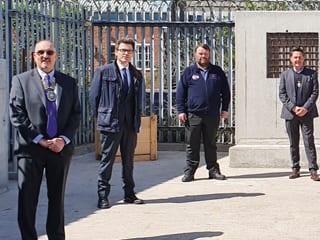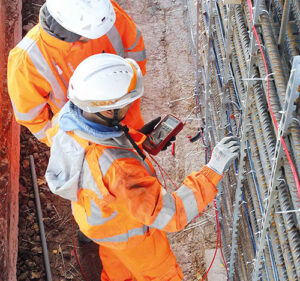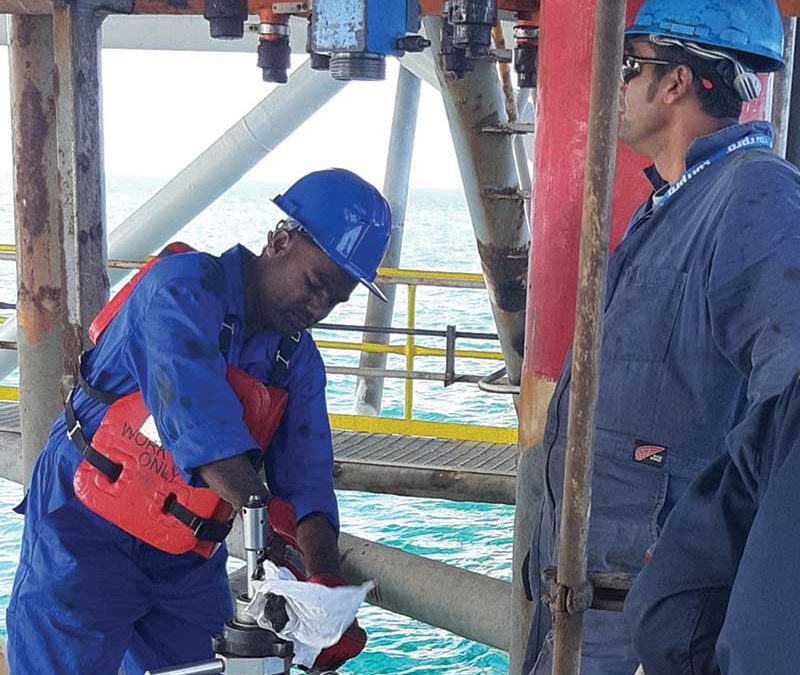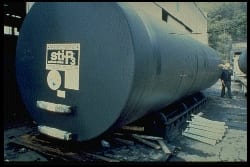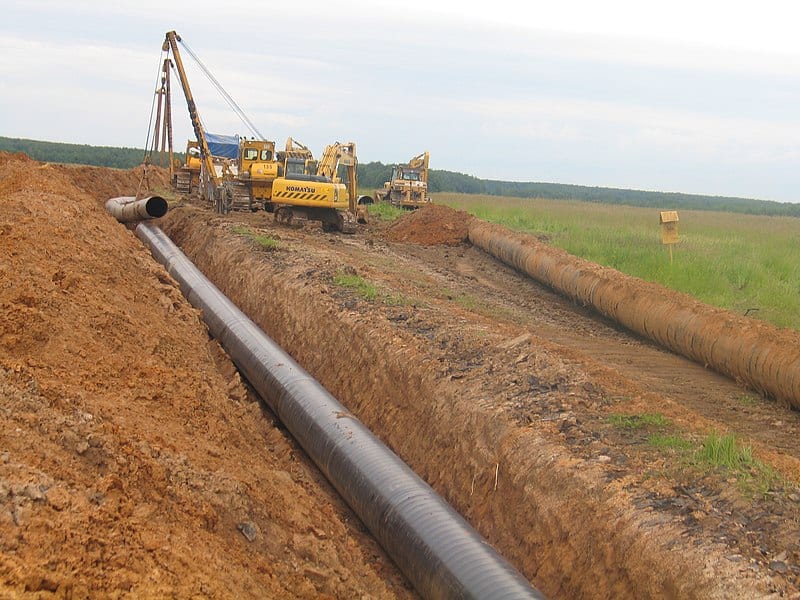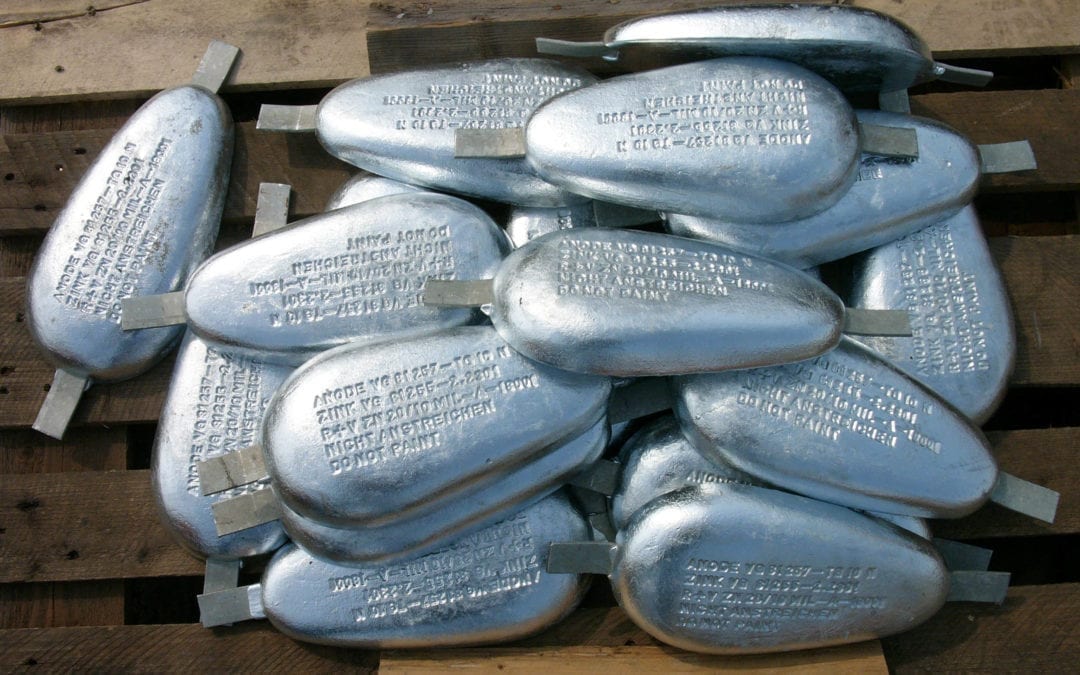Cathodic protection methods – differences and similarities
In our last article, we examined electrochemical corrosion and introduced the major areas where cathodic protection is used to protect against corrosion in aggressive environments such as soils, waters, and chloride contaminated concrete.
In this article, we take a deeper dive into how cathodic protection works.
The two types of cathodic protection
There are two types of cathodic protection: galvanic anode and impressed current cathodic protection.
Both provide a cathodic protection current flow from cathodic protection anodes placed within the same electrolyte as the metal to be protected. The current flows from the anode into the electrolyte. It discharges onto the metal, controlling the corrosion. It must flow within the metallic circuit (the metal plus the cables) and back to the anode to complete the circuit.
Galvanic anode cathodic protection (GACP)
Galvanic anode cathodic protection works as summarised above.
The anode materials are alloys of either zinc, aluminium, or magnesium – all more active metals than, for example, carbon steel. These more active metals corrode preferentially to the steel when they are metallically connected to the steel in an electrolyte.
The corrosion current of the anode material is the cathodic protection current for the steel. The current flows through the electrolyte onto the steel, controlling its corrosion. The current returns to the anode in the metallic circuit.
You may have heard the term ‘sacrificial anodes’. However, though this terminology describes the anode materials and how they act (the galvanic anode corrodes preferentially to the steel), it was changed in Europe in the 1980s to ‘galvanic anodes’.
You may see galvanic anode cathodic protection identified by the acronym SACP or GACP.
· How is galvanic anode cathodic protection used?
Offshore, anodes are normally cast onto structural tubular cores which are welded to the offshore structure during construction onshore.
Offshore oil and gas pipelines are protected with aluminium alloy or zinc bracelet anodes clamped over the protective coating and connected to the pipeline by short cables or welded connections. Such protection should last for 30 years or longer.
Onshore, short pipelines are often protected using magnesium anodes. These are cast onto steel cores and connected to the pipeline with cables. In soils of low electrical resistivity, extruded or continuously cast and hot-rolled zinc ribbon is used. Zinc ribbon is widely used as an earthing electrode to mitigate induced alternating current (AC) on buried pipelines.
Impressed current cathodic protection (ICCP)
Impressed current cathodic protection is provided by connecting a DC power source between the metal being protected and the cathodic protection anodes. In contrast to GACP, the cathodic protection current is supplied by the DC power source and not by corrosion of the anode itself.
The DC power supplies are typically transformer rectifiers (confusing acronyms include TR, TRU and T/R) which convert mains electricity to low voltage DC. In remote areas, solar panels and batteries are commonly used (and stolen); thermo-electric DC generators and both diesel and gas engines driving generators have also been used.
The negative pole is connected to the protected metal (‘negative drain point’), and the positive pole is connected to the anode. As with GACP, the cathodic protection current flows from the anode, through the electrolyte and onto the metal being protected.
The anodes can be scrap steel (a reasonably common practice in France, where old railway rails are often used in such applications), high silicon iron, or sophisticated ‘mixed metal oxides’ coated onto titanium. Other materials, including graphite, magnetite, lead, platinum-coated titanium and niobium, have also been used, though performance and cost have combined to reduce their use.
· How is impressed current cathodic protection used?
Offshore, anodes are typically mixed metal oxide coated titanium (MMO/Ti). These can be used in both seawater and saline mud, though in the latter their consumption rate is greater.
For steel in concrete, most impressed current systems use MMO/Ti anodes either in mesh, strip, or tubular form. There is a tubular anode formed into a conductive ceramic of MMOs.
In onshore applications, groups of anodes are normally used in ‘groundbeds’, which may take the form of a long horizontal trench in which multiple anodes are buried in a carbonaceous backfill. This increases the surface area, reduces the electrical resistance to ground, and extends the anode life. Similarly, anodes and ‘coke’ can be used in deep boreholes or multiple shorter boreholes. Anodes are typically high silicon cast iron or MMO/Ti.
Most impressed current systems will require replacement after about 25 years.
Which form of cathodic protection is best?
If the cathodic protection system is well designed, installed, operated and maintained, both galvanic anode and impressed current cathodic protection can be equally effective. However, GACP is simpler and has proved to be more reliable offshore.
Onshore, ICCP systems are easier to access for maintenance and, once installed, their components are not subject to the challenges of offshore environments. If properly designed, ICCP can protect many kilometres of well-coated pipelines.
ICCP is also advantageous for bare or poorly coated steel as it can deliver hundreds of amps of low voltage direct current, while a typical galvanic anode will seldom deliver more than 5 amps.
Cathodic protection – a specialist operation
Cathodic protection is used extensively to protect critical infrastructure from corrosion. For example:
- It is legally mandated for gas and oil pipelines to ensure their safe operation
- Offshore gas and renewable energy structures are effectively mandated to receive effective cathodic protection by their certification bodies
- Ships benefit from extended dry-docking rules if they have effective cathodic protection
- The life of concrete bridges and structures affected by chlorides, from de-icing salts or marine exposure, is extended by cathodic protection
- Newly constructed, reinforced concrete structures in severe exposure conditions also have extended life when cathodic protection is used
However, across all functions – from design through installation to testing and maintenance – cathodic protection is highly specialised. There are standards (BS ENs and BS EN ISOs) for cathodic protection applications for different structures in different environments.
A key takeaway from the standards is that they make it clear that cathodic design must be undertaken by cathodic specialists with a documented, appropriate level of competence.
How do you gain a cathodic protection specialisation?
There are no degrees that can be gained in cathodic protection, and there are no postgraduate courses in cathodic protection engineering, either. Instead, you find that cathodic protection specialists may hold a science or engineering degree (or complete an apprenticeship) before undertaking specific training and gaining experience and expertise in cathodic protection.
The Institute of Corrosion offers courses in cathodic protection, providing the training required for levels 1 to 3 for cathodic protection data collectors, technicians and senior technicians. These courses are produced, owned and administered by the Institute of Corrosion CP Governing Board (CPGB), part of the ICorr Professional Development and Training Committee (PDTC).
These courses are designed for those seeking the certification of competence in accordance with standard BS EN ISO 15257. We also find that these courses add value to managers and others who want to know what their cathodic protection staff and/or contractors must be doing and the limits of what they should do.
Independent of the cathodic protection courses and the PDTC and CPGB, the Institute of Corrosion also offers an independent assessment of competence through its Professional Assessment Committee (PAC). This is recognised internationally as confirmation of experience, knowledge and task skills as defined in standard BS EN ISO 15257; it is valid internationally.
For cathodic protection companies and for independent cathodic protection specialists, attainment of cathodic protection training and certification will ensure demonstration of competence, experience and expertise. This translates into more effective work, improving reputational excellence, and more employment opportunities.
To learn more about our range of cathodic protection training courses and the experience and qualifications needed for certification, please visit our pages detailing the Cathodic Protection, Training, Assessment and Certification Scheme.
In our next article, we explode 7 cathodic protection myths.
